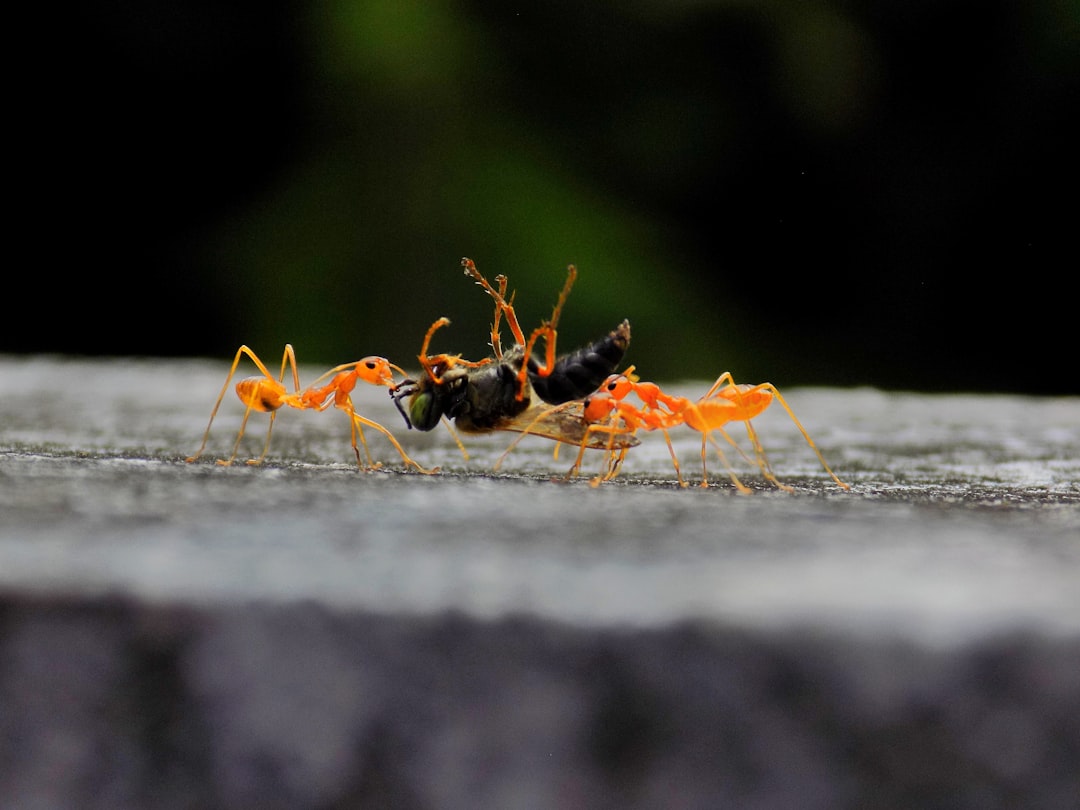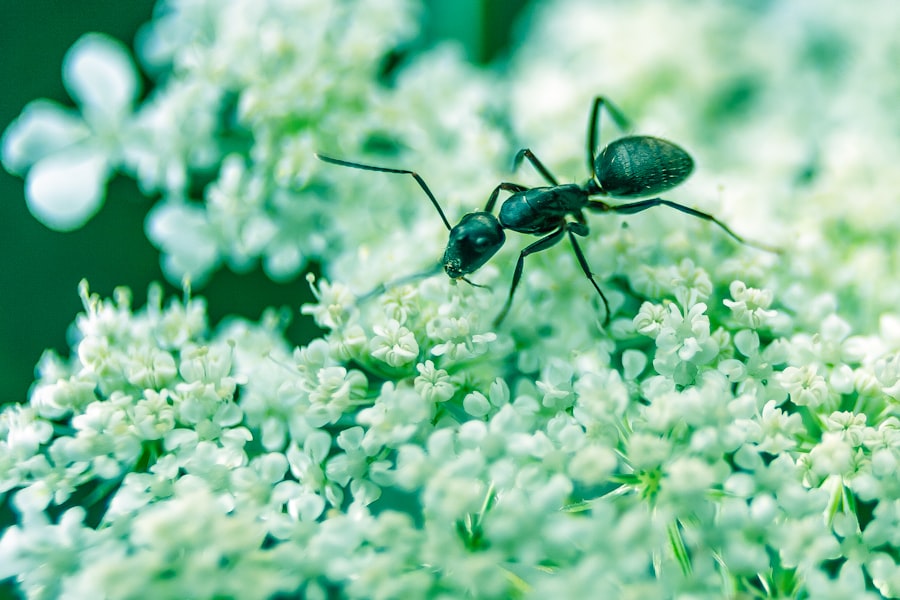Ants no more: The ultimate solution

Ant infestations in homes can be a frustrating and persistent problem. These tiny insects can invade our living spaces, contaminating food, damaging property, and causing general discomfort. It is important to find effective solutions to control ant infestations and prevent them from recurring. Traditional ant control methods such as sprays, powders, and traps have been commonly used, but they often have limitations in terms of their short-term effectiveness and potential harm to humans and pets. In this article, we will explore a more effective and safer alternative to traditional methods: ant bait stations.
Key Takeaways
- Traditional ant control methods have limitations and may not be effective in the long term.
- Ant bait stations are the ultimate solution for controlling ant infestations.
- Ant bait stations work by attracting ants to a bait that contains a slow-acting poison.
- Ant bait stations have several advantages over traditional methods, including being more targeted and safer for pets and children.
- To use ant bait stations effectively, it’s important to choose the right type for your needs and follow the instructions carefully.
Traditional Ant Control Methods
Traditional ant control methods include sprays, powders, and traps. Sprays are commonly used to kill ants on contact. They contain chemicals that are toxic to ants and can be sprayed directly on the ants or their trails. Powders work similarly by using toxic chemicals that kill ants when they come into contact with them. Traps are designed to attract ants with bait and then trap them inside, preventing them from returning to their colony.
While these methods can provide temporary relief from ant infestations, they often have limitations. Sprays and powders only kill the ants that come into direct contact with them, leaving the rest of the colony unaffected. This means that new ants can quickly replace the ones that were killed. Traps may be effective in capturing some ants, but they do not eliminate the entire colony. Additionally, traditional methods can pose risks to humans and pets if not used properly or if ingested accidentally.
The Limitations of Traditional Ant Control Methods
One of the main drawbacks of traditional ant control methods is their short-term effectiveness. As mentioned earlier, sprays and powders only kill the ants that come into direct contact with them, leaving the rest of the colony untouched. This means that new ants can quickly replace the ones that were killed, leading to a recurring infestation. Traps may capture some ants, but they do not address the root of the problem, which is the colony itself.
Another limitation of traditional methods is the potential harm they can cause to humans and pets. Sprays and powders often contain toxic chemicals that can be harmful if inhaled or ingested. They can also leave behind residue on surfaces, which can be dangerous if touched or ingested. Traps, although less harmful, can still pose a risk if accidentally ingested by children or pets.
The Ultimate Solution: Ant Bait Stations
| Product Name | The Ultimate Solution: Ant Bait Stations |
|---|---|
| Target Pests | Ants |
| Active Ingredient | Borax |
| Quantity | 6 bait stations |
| Usage | Indoor and outdoor |
| Effectiveness | Eliminates entire ant colony |
| Duration | Up to 3 months |
| Application | Place bait stations near ant trails and replace every 3 months |
Ant bait stations offer a more effective and safer alternative to traditional ant control methods. These devices are designed to attract ants with a bait that contains a slow-acting poison. The ants are attracted to the bait and carry it back to their colony, where it is shared with other ants, including the queen. This leads to the gradual elimination of the entire colony, not just the ants that come into direct contact with the bait.
How Ant Bait Stations Work
Ant bait stations work by exploiting the natural behavior of ants. The bait contains a slow-acting poison that is attractive to ants. When an ant finds the bait, it consumes it and carries some back to its colony. The poison takes time to work, allowing the ant to return to its colony before dying. As the poisoned ant interacts with other ants in the colony, it spreads the poison, eventually reaching the queen. Once the queen is eliminated, the colony collapses.
Ant bait stations are designed to protect the bait from being contaminated by other substances and to prevent access by children and pets. They typically consist of a plastic container with small openings that allow ants to enter and exit but keep larger animals out.
Advantages of Ant Bait Stations over Traditional Methods

Ant bait stations have several advantages over traditional ant control methods. Firstly, they target the entire colony, not just the ants that come into direct contact with the bait. This ensures long-term effectiveness and prevents recurring infestations. Secondly, ant bait stations are safer to use around humans and pets. The bait is contained within the station, reducing the risk of accidental ingestion or contact with toxic chemicals. Lastly, ant bait stations are easy to use and require minimal maintenance. Once placed, they can be left alone to do their job.
Choosing the Right Ant Bait Station for Your Needs
When selecting an ant bait station, it is important to consider the type of ant infestation and the size of the affected area. Different species of ants may be attracted to different types of bait, so it is important to choose a bait station that is specifically designed for the type of ants you are dealing with. Additionally, the size of the affected area will determine how many bait stations you need to effectively control the infestation.
How to Use Ant Bait Stations Effectively
To use ant bait stations effectively, it is important to place them in strategic locations where ants are likely to encounter them. This includes along ant trails, near entry points, and in areas where ants are frequently seen. It is also important to monitor the progress of the bait stations and replace them if necessary. If the bait is consumed quickly, it may indicate a large colony that requires additional bait stations.
Tips for Preventing Ant Infestations
While ant bait stations can effectively control existing infestations, it is also important to take steps to prevent future infestations. This includes keeping a clean home by regularly cleaning up food crumbs and spills, storing food in airtight containers, and taking out the trash regularly. It is also important to seal entry points such as cracks and gaps in walls, windows, and doors.
Enjoying an Ant-Free Home
In conclusion, ant infestations in homes can be a persistent problem, but there are effective solutions available. Traditional ant control methods have limitations in terms of their short-term effectiveness and potential harm to humans and pets. Ant bait stations offer a more effective and safer alternative. They work by attracting ants with a slow-acting poison that is carried back to the colony, leading to the elimination of the entire colony. By choosing the right ant bait station, using it effectively, and taking steps to prevent future infestations, homeowners can enjoy an ant-free home.
If you’re tired of dealing with pesky ants invading your home or garden, you’ll want to check out this informative article on the best way to eradicate ants. This article provides valuable tips and techniques to effectively eliminate ants and keep them from coming back. From natural remedies to professional pest control methods, you’ll find a range of solutions to suit your needs. Don’t let ants ruin your peace of mind any longer – click here to read the article and reclaim your space: https://www.lawnworld.com/best-way-to-eradicate-ants.
FAQs
What are ants?
Ants are social insects that belong to the family Formicidae. They are known for their ability to form colonies and work together to gather food and protect their nest.
Why do ants invade homes?
Ants invade homes in search of food, water, and shelter. They are attracted to sweet and sugary substances, as well as crumbs and other food particles.
What are the dangers of having ants in the house?
While ants are generally harmless, they can contaminate food and surfaces with bacteria and other pathogens. Some species of ants can also bite or sting, causing pain and discomfort.
What is the best way to eradicate ants?
The best way to eradicate ants depends on the species and the severity of the infestation. Some effective methods include using bait traps, spraying insecticide, and sealing off entry points to the home.
Are there any natural remedies for getting rid of ants?
Yes, there are several natural remedies for getting rid of ants, including using vinegar, lemon juice, cinnamon, and peppermint oil. These substances can be used to create a barrier that ants will avoid or to repel them from the home.
How can I prevent ants from coming back?
To prevent ants from coming back, it is important to keep the home clean and free of food debris. Sealing off entry points and fixing any leaks or moisture issues can also help to deter ants from entering the home. Regularly using insecticide or natural repellents can also help to keep ants at bay.



